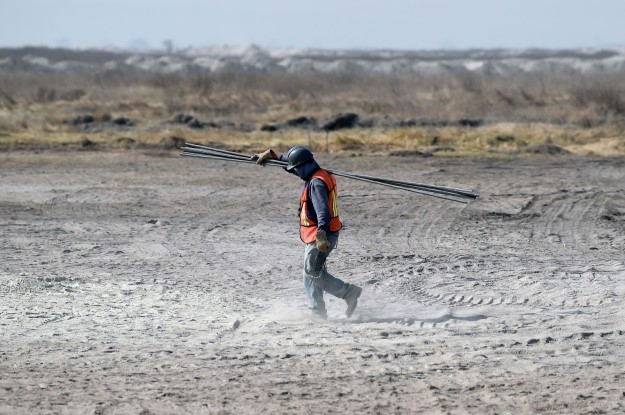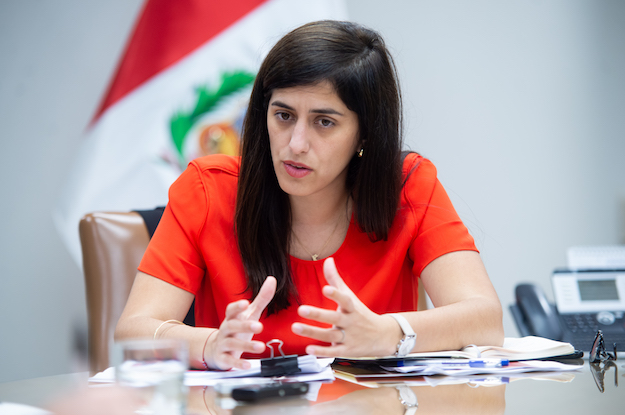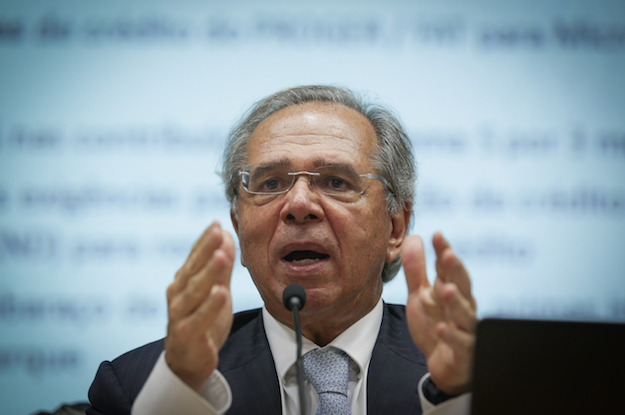MEXICO CITY – This year has already brought a wave of bad news for Mexico. We recently learned our economy did not grow at all in 2019. In fact, GDP actually decreased 0.5% on an annual basis during the final quarter of the year. Meanwhile, economists are racing to calculate the economic impact of the Covid-19 epidemic, which is spreading globally and produced its first confirmed cases on Mexican soil last week.
But there is reason to be even more worried about Mexico in the longer term: Our “potential GDP” – a term used by economists to calculate how fast an economy can grow over time without producing unhealthy distortions – seems to be falling as well. That’s highly disconcerting in an economy that has already been notorious for slow growth over the last 20-plus years.
The uninspiring short-term outlook for Mexico is nearly unanimous among forecasters. The OECD has just presented its forecasts, cutting the expectation for global growth from 2.9% to 2.4% and that of Mexico from 1.2% to 0.7% for this year and to 1.4% for 2021, from a previous estimate of 1.6%. These would obviously be huge disappointments for President Andrés Manuel López Obrador, who prior to taking office predicted that Mexico would average 4% growth on his watch.
The OECD defines potential GDP as the level of output that an economy can produce at a constant inflation rate. It depends on a number of factors, including a country’s capital stock, the labor force and the efficiency of the latter, which we can refer to as human capital. The difference between the potential output and observed GDP is referred to as the output gap. A country’s economy can temporarily grow at a faster rate than its potential, but this usually causes “overheating” in the economy with symptoms including high inflation and other distortions. An example of this was Brazil a decade ago, which briefly grew at a 7% annual rate but suffered problems for years afterward.
It’s true that potential GDP is a theoretical number, but it is carefully calculated using statistical models. In Mexico, the Ministry of Finance calculates potential GDP using two main sources: i) the compound annual rate of observed real GDP growth for at least the 10 years prior and ii) the compound annual rate of estimated real GDP growth for a maximum of 5 years in the future. I highlight with italics “at least” and “maximum” because the Ministry of Finance sometimes changes the sample. In the economic criteria used for the 2019 budget, it considered 19 years, from 2003 to 2022. For the 2020 budget, the Ministry of Finance enlarged the sample it considered to a 28-year window of 1996 to 2024. No one is quite certain why.
In any case, after doing the respective math, the finance ministry concluded that the potential GDP growth for 2019 was 2.4%, and it was exactly the same for 2020. Other institutions have their own numbers. For instance, OECD estimates Mexico’s potential GDP at 2.08% for 2020 and 2.05% for 2021.
For the past 25 years, Mexico’s average annual growth rate has been 2.3%. If we consider an average rate of 1.2% in population growth, per capita growth has been around 1.1%, clearly not enough for an “emerging” economy. Using average numbers, Mexico has basically been growing at or near its potential growth – meaning a decline in the latter figure would be especially worrying.
This brings us to Mexico’s current conundrum. Yes, the lack of growth in 2019 – despite a potential GDP somewhere around 2 percent – is concerning. But from my perspective, we are seeing more than a short-run shock or even a cyclical downturn. The reasons behind that decrease are worrisome. The current administration has made several decisions that tamper with the construction of a more dynamic economy, hence damaging Mexico’s growth prospects – its potential GDP.
At the end of 2018, the construction of a new airport in Mexico City was cancelled – depriving not just the capital, but the whole country, of precisely the kind of big infrastructure project that could improve productivity (and thus potential GDP) over time. (The government’s alternative plan to handle rising air traffic is unlikely to solve bottlenecks.) The 2013 energy reform was basically put to a halt, meaning that crucial sector will likely continue to struggle with low output. For reasons of budget austerity, thousands of people were fired from the public administration and those staying faced significant wage cuts. The result was a loss in human capital that has impaired the capacity of the government to respond to basic functions.
Furthermore, the government has tried to change the terms of some contracts with the private sector. This occurred with contracts involving the construction of gas pipelines in mid-2019, further damaging the overall investment climate. Fixed investment decreased 5.1% during 2019 and capital imports showed a contraction of 8.9%.
Public investment is also decreasing. It’s not only the amount that is important, we should also consider the projects that are under development. For different reasons, neither the Maya Train nor the Dos Bocas refinery – two of the three major infrastructure projects of the current administration – will change the country’s economic capacity. They can be seen more as expenditures than investments. And we are not even considering the education system which is not only not evolving to adapt to a more globalized and tech-savvy world, but is moving backwards.
Finally, Mexico is about to lose the so-called demographic bonus that we have had for some years. The population above 65 years currently represent 7% of the whole, but in 2050 that percentage will have risen to 20%. We are seeing a lower fertility rate and rather soon the “young” population (those below 15 years old) will stabilize around 30% of the total. That will increase the pressure on the labor force. According to Isaac Katz, an economist, the demographic bonus will only last for eight more years.
My concern is that some of us will continue discussing the negative GDP rate of 2019 – a photo of the recent past, rather than a glimpse of the future – while others will keep on focusing on the president’s daily morning press conferences. And while this goes on, our country’s ability to grow in the future is being destroyed, bit by bit, mostly unperceived. It is urgent that we change course, and build the foundations that Mexico needs to grow.
—
Moy is a professor of economics and the director of policy think tank México, ¿cómo vamos? She is also a member of AQ’s editorial board.








